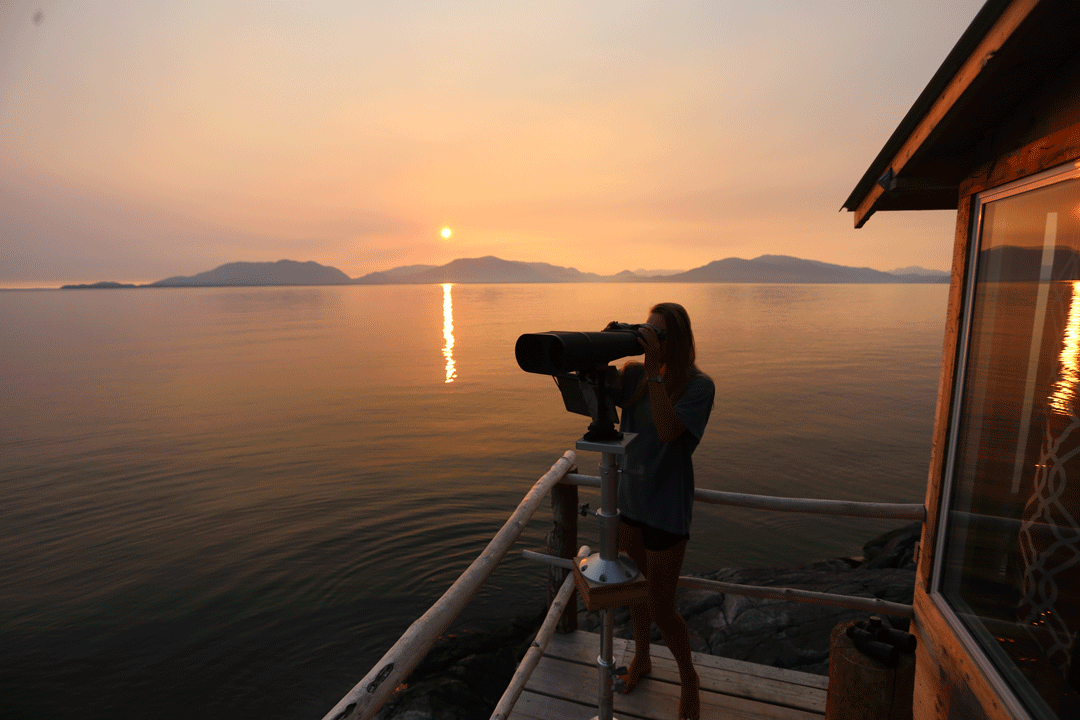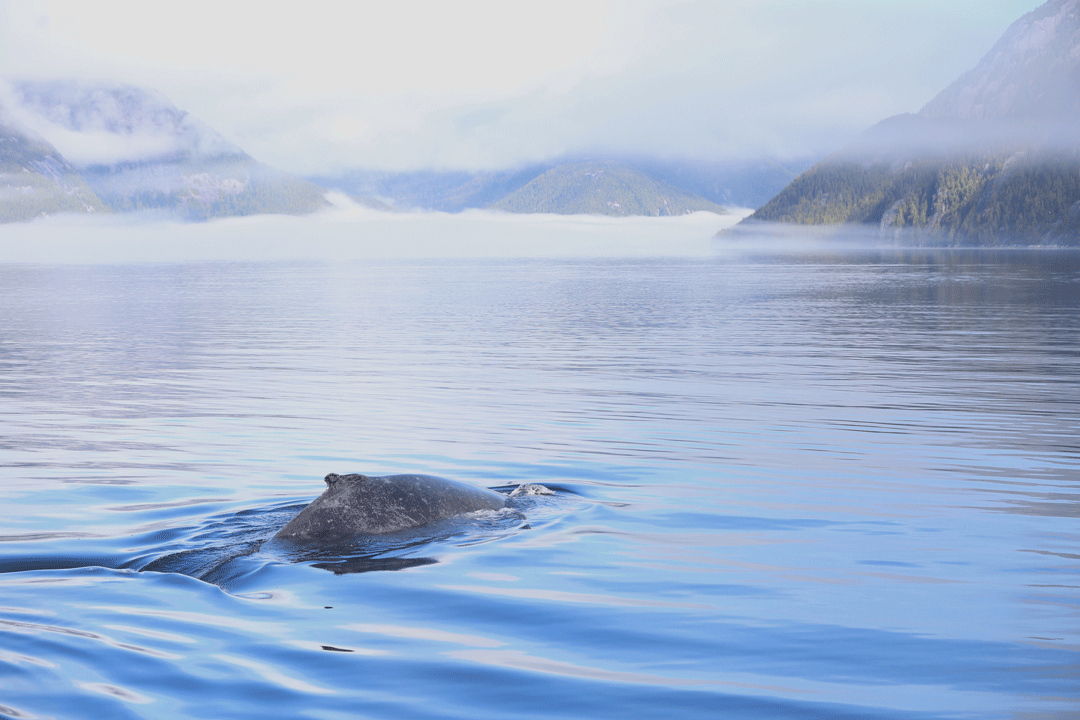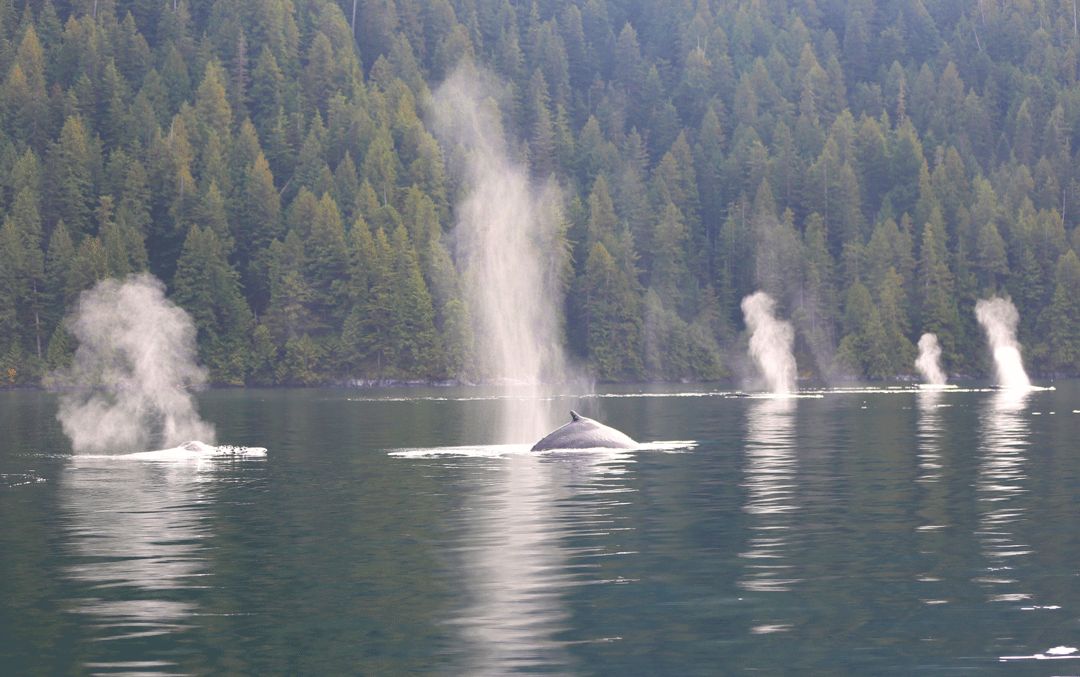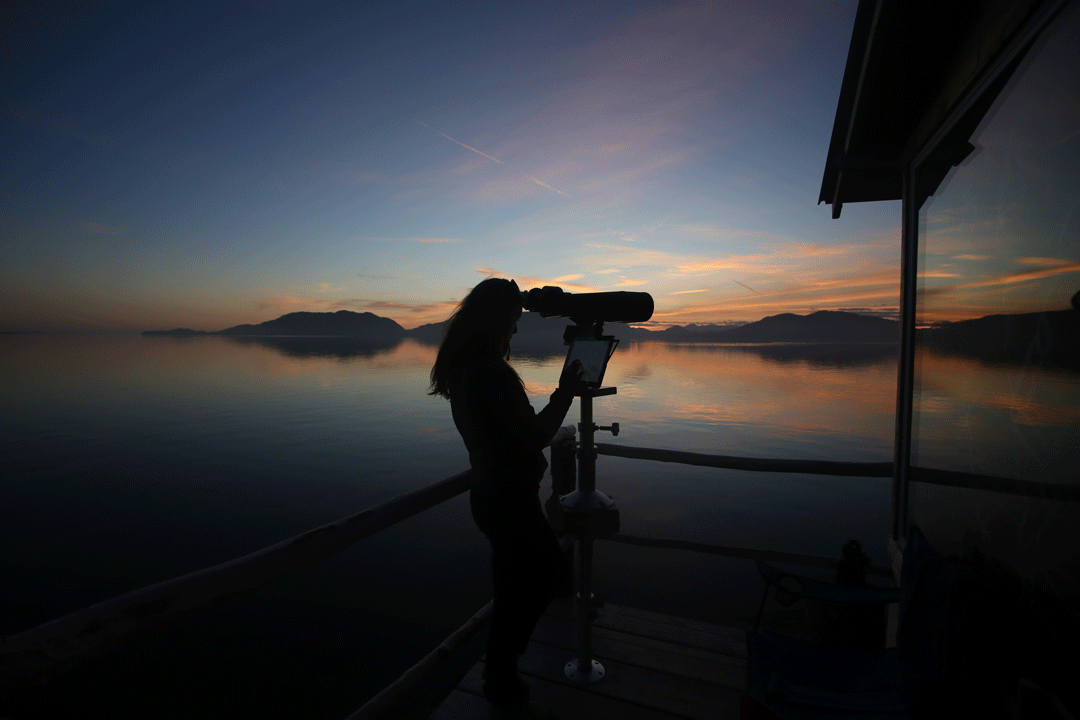Life in Tune
Living on Fin Island, you must constantly pay attention to your surroundings (the weather and sea conditions, the amount of sunlight or rainfall, the tides, the movement of the sun and moon, and of course cetacean and boat activity — both visual and acoustic). Even when we’re not actively scanning, the corners of our eyes and ears are always alert and awaiting the next whale. And even when we’re sleeping, it seems that our brains are “on”; any sudden noise on the hydrophone sends us leaping out of bed at night. We are always tuned in.

Photo © Janie Wray
I realize that I’ve become hyper-sensitized to the noises around me. It’s quiet without street noise, airplanes, music, human chatter. The sounds of whales boom over the silence. The splashes of breaching humpbacks sound like gunshots and echo off the surrounding mountains. In the quiet night, a whale’s breath can be heard for miles. Even a bird’s call is loud and clear without human noises drowning it out.

Photo © Janie Wray
Not only can we hear the noises over the quiet Squally Channel, but we’ve begun to learn them as well. I never imagined I would be able to distinguish between a harbour seal and sea lion by the sound of its breath; nor did I think I could tell one cetacean’s blow from another’s or predict a humpback’s behavior by the sounds it makes on the hydrophone.

Photo © Janie Wray
It’s not just the marine mammals that we’re in tune with, though; we’ve become aware of every little sound. We know to listen out for the whistle of the tea kettle and the gurgle of percolating coffee. A quiet voice from a nearby fishing boat always catches our attention. A rustling noise on the ground by the “Pootique” (the outhouse) tells us to look out for a toad on the path. Sounds tell us what the weather’s doing — if it’s windy outside or if there is rain approaching. We could even hear a cloud of smoke as it rolled in over the mountains one day in August; the breeze sounded dry and ominous as it rustled the trees, telling us that something was not right.

Photo © Janie Wray
I’ve found that I am paying attention. I am truly watching and listening to the things around me. In paying constant attention to the sea and its sounds, it seems that I have trained my brain to be more aware of my surroundings.
I can’t remember ever deeply enjoying just sitting and observing the world around me before coming to Fin. In the past, I’ve always felt a need to fill the void with some sort of noise or distraction. On Fin, however, I can just sit on the rocks, watching and listening. From our perch on the rocks, we look at the same water and mountains every single day; yet the view is ever-changing. The sky can transform itself into an infinite range of colors in just a single day, while the clouds constantly mold and remold themselves as they traverse the sky. As the tides come in, they swallow up half our world, and when they go back out, they reveal a whole community of purple starfish living on our rocks. And the whales — some days they’re lively, and others they’re sleepy; they can be chatty or they can be quiet; sometimes they’re social, and other times they aren’t; sometimes they bubble net feed all day long; occasionally there are Fin whales or (very rarely) there are Transient Killer whales. We may keep the same daily routine, but every day is so unique because of the life that’s happening around us.

Photo © Janie Wray
Returning back to the “real world,” I hope to keep paying attention — actively engaging. It’s so easy to get caught up in what we’re doing in the day-to-day and forget to be mindful. But there is so much to see in a single day if we just look and listen, not just on Fin Island but everywhere. We just need to be aware of the world around us. Live life tuned in.
